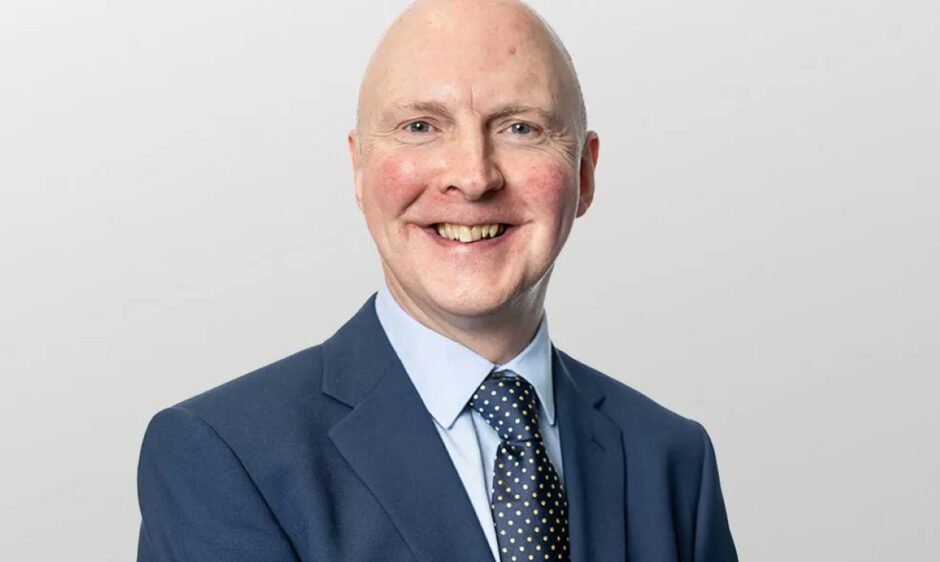Committed to holding only one fiscal event per year, the Chancellor will have been hoping that her first upcoming Spring Statement would be relatively straightforward.
-
Some Press and Journal online content is funded by outside parties. The revenue from this helps to sustain our independent news gathering. You will always know if you are reading paid-for material as it will be clearly labelled as “Partnership” on the site and on social media channels.
This can take two different forms.
“Presented by”
This means the content has been paid for and produced by the named advertiser.
“In partnership with”
This means the content has been paid for and approved by the named advertiser but written and edited by our own commercial content team.
However, 2025 has brought with it global developments that have added uncertainty. When this is coupled with the impact of the tax measures announced in the Autumn Budget, a slowing UK economy, which only grew by 0.1% in the quarter to December 2024, high inflation, and higher borrowings costs the Chancellor is under mounting pressure to take action to continue to fund the Governments current expenditure.
It has been widely reported that, rather than announcing further tax rises, the Chancellor is likely to rely on spending cuts to raise additional funds as was evidenced by Tuesday’s announcements of £5billion cuts to welfare spending by the end of 2030.
But with little flexibility and experts warning that spending cuts alone won’t fully address the fiscal black hole in public finances, does the Chancellor have room for manoeuvre with tax?
What, therefore, are the potential areas of tax policy that the Chancellor could revisit and reconsider to incentivise investment and help boost the economy?
Whilst the Chancellor may be reluctant politically to not raise the rates of income tax, employees NIC, VAT, and corporation tax it is possible that she could announce a freeze on tax thresholds in England and Wales which were due to expire in April 2028. Extending these thresholds for a further two years or even lowering the thresholds when higher rates of tax apply, will bring in more tax revenue through rising wages.
Scotland sets its own tax thresholds and tax rates but could suffer from changes in the tax thresholds in England and Wales and through government spending cuts. Any resulting changes in UK government policy could reduce the block grant and reduce monies available to the Scottish Government to fund their spending commitments.
Cash ISAs reform
The Chancellor is said to be still considering options for amending cash ISA rules and it seems inevitable that some sort of long-term reform is on the cards. Some of the speculation in this area include reducing the allowance to £4,000 or even scrapping it all together however it is unlikely that there will be any announcements in this area in the Spring Statement.
Inheritance Tax reforms
Key reforms to Inheritance Tax announced in the Autumn Budget included:
- Changes to Agricultural Property Relief (APR) and Business Property Relief (BPR).
- Inclusion of unused pensions within the scope of Inheritance Tax (IHT).
A Government consultation is ongoing until April 23 on these measures. While it is unlikely that the above changes will be amended in full as a result of the consultation, the planned IHT changes are proving unpopular and perhaps could be tweaked in the Spring Statement.
Further pensions reforms
As part of the changes in the Autumn Budget, pensions are to be brought into the Inheritance Tax Regime. All assets will now be taxed at a flat rate of 40% over IHT thresholds from 2027, in-line with IHT. Given this does not take effect until 2027, the big question is whether there will be more changes to the pension regime?
Funding a pension scheme is still tax efficient, but the problem is that people may start to question the viability of doing so. The Government still needs to make pensions a viable option for people to save for retirement and be encouraged to do so. The UK Government’s fiscal headroom is, however, getting exceedingly tight, and pensions have often been seen as a soft target, so at some point we may well see further reforms to the tax free lump sum or changes to pension tax relief on contributions to pension schemes.
Triple whammy impact on businesses
Following the Autumn Budget, UK companies faced a triple whammy of a rise in NICs, a significant jump in the statutory minimum wage (impacting some employers) and no prospect of a cut in corporate tax during this parliament.
Clearly the Government were hoping that the public would understand that the fiscal gap had to be filled somehow but this represents a big increase in the cost of employing people and creating new jobs. This also sits uneasily with the Government focus on long-term economic growth and is likely to give potential future investors’ concerns about coming to the UK.
The Chancellor may well take the opportunity to announce some NIC relief for the charity sector which faces a major funding issues to manage the NIC rise. Help could also be given to businesses by increasing the Employment allowance or increasing the thresholds before employer’s NIC becomes payable.
Although the Government is now consulting on a replacement to the Energy Profits Levy in 2030, which is severely impacting economic growth in the north east of Scotland, it is unlikely that there will be any announcements about a new mechanism until later in the year. Short term help in the budget would, however, be welcome to help support jobs and investment in the region.
For more information visit the MHA website.


Conversation